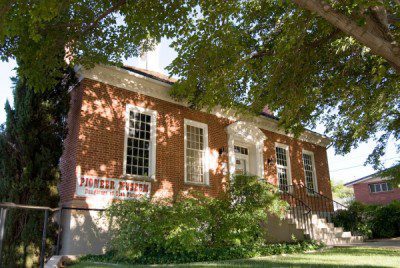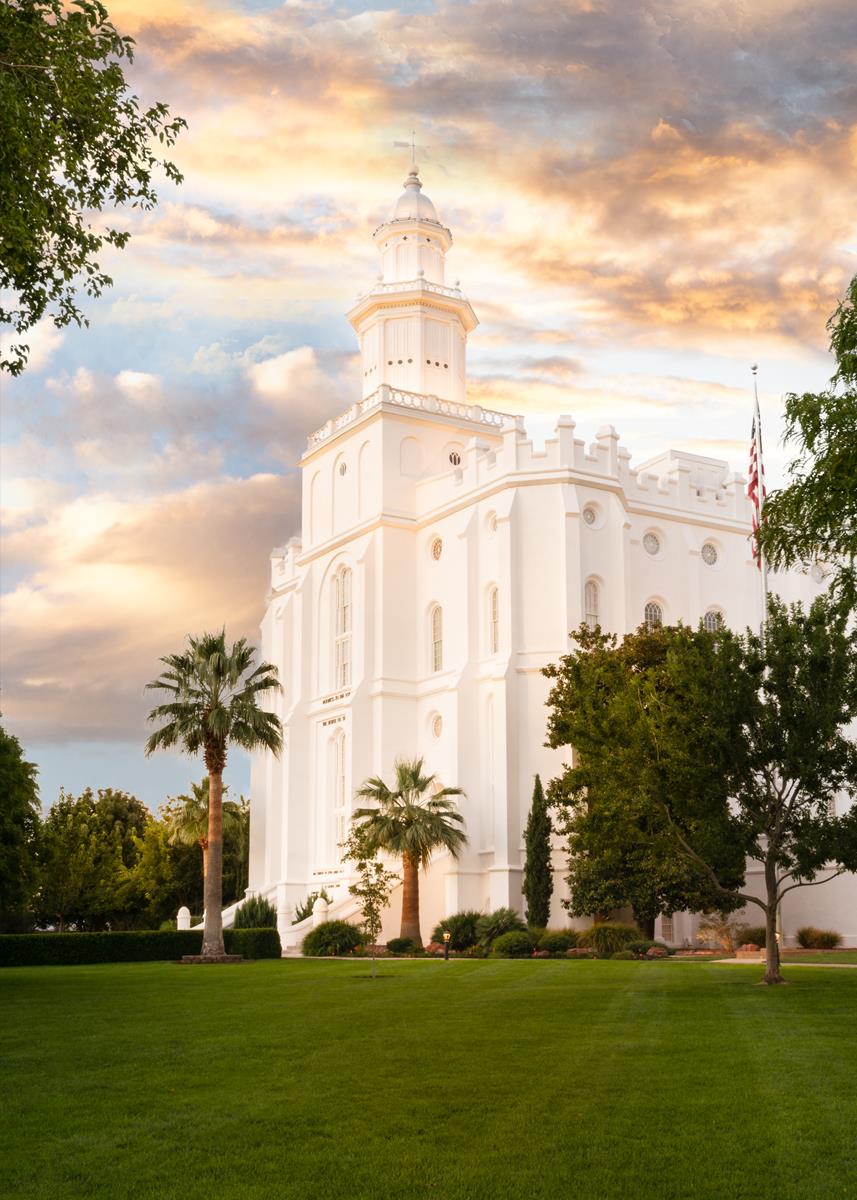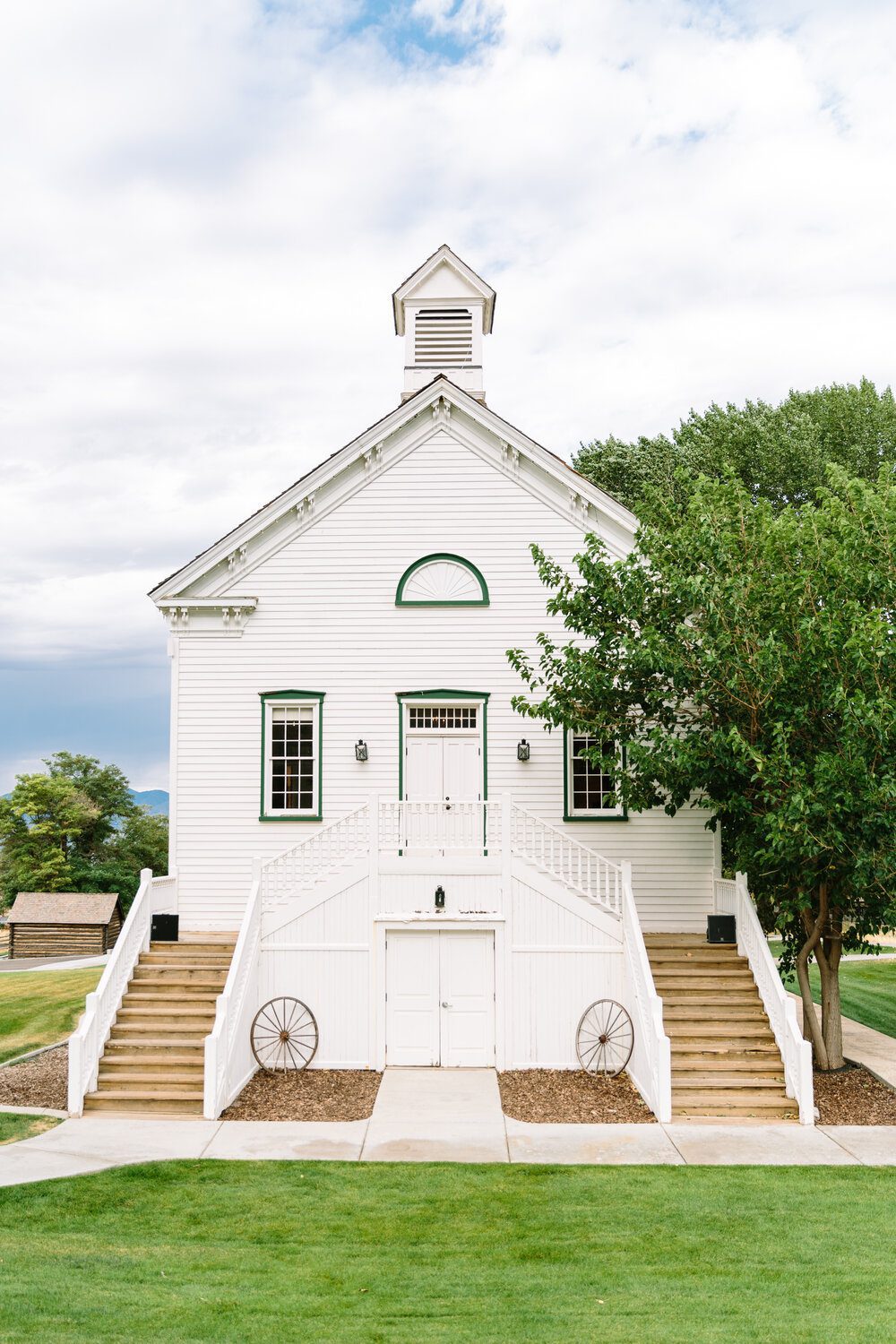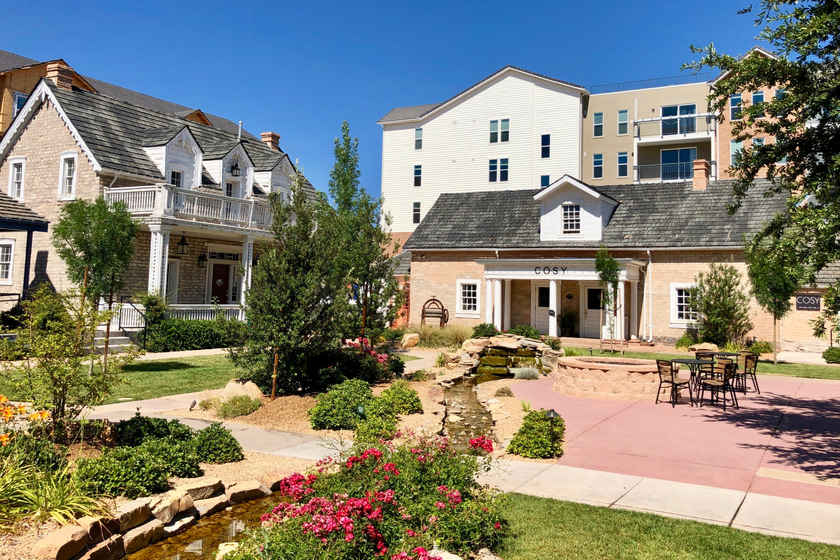
Historical Sites | St. George
Here are some wonderful Historical Sites around St. George. Go back in history while visiting the Tabernacle, Pioneer homes and old local stores that are still operating today!
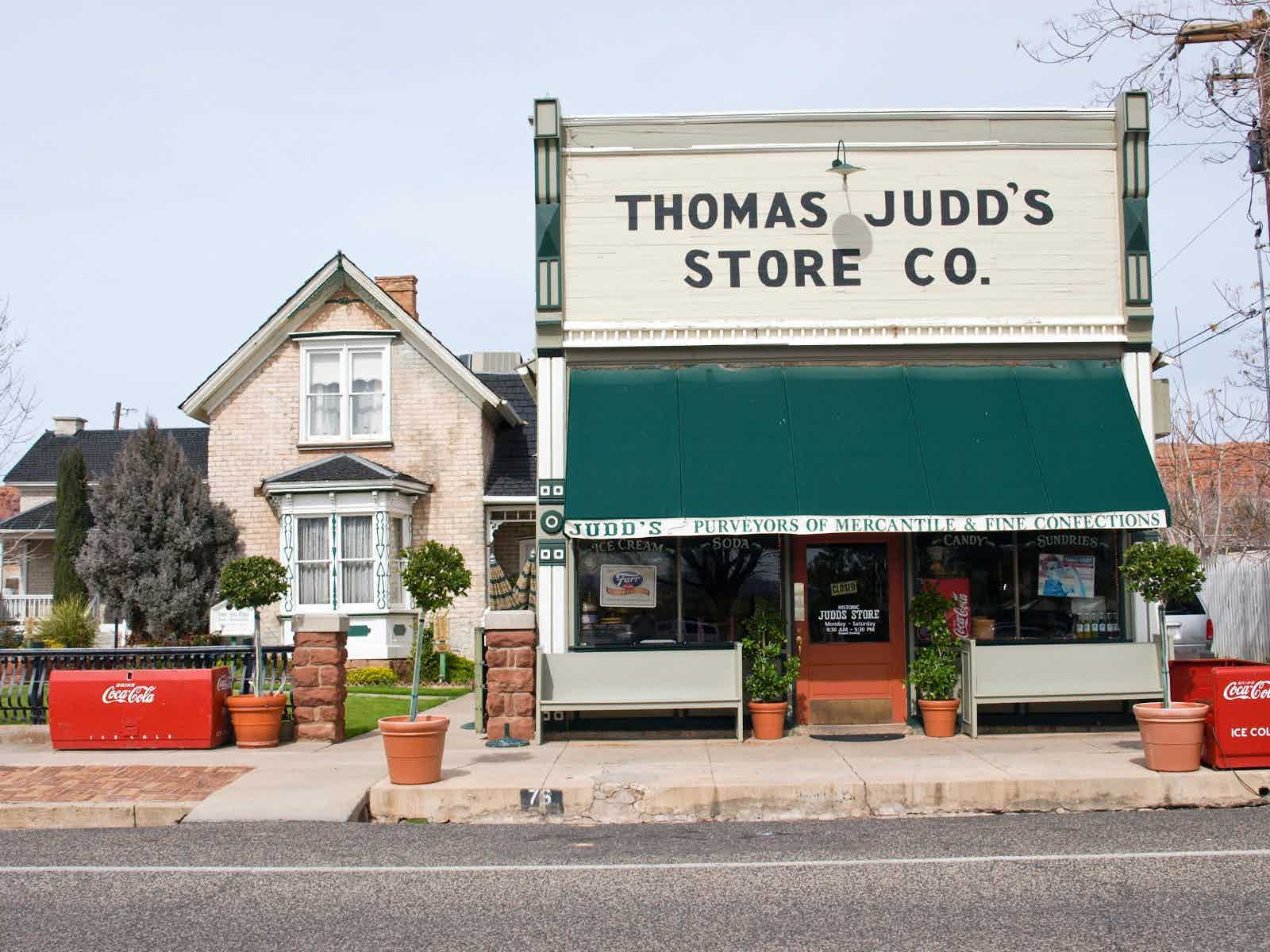
Old Judd`s Store
Judd`s Store is the oldest ongoing business establishment in St. George. Judd`s Store was constructed and opened in 1911 in front of the house Thomas Judd purchased from Joseph Bentley in 1908 and across the street from the new Woodward School. At some point, it was connected to the front of the house, but that connection was later removed to restore the store to its original condition. The store was very successful, carrying general merchandise, and catering to the needs of the sheep and cattlemen which were numerous in the early days of Dixie. When Thomas` son, Joseph Judd, took over, he continued to run the store but boarded up the rest of the structure. The store remained in the Judd family`s possession until 1982. At that time, the city wanted to condemn the store and turn it into a parking lot. Dr. Mark & Barbara Greene purchased the building making it into a focal point of their Green Gate Village. The store has been restored and is still open today. To step into Judd`s Store is to step back in time. Particularly outstanding is the ceiling which the Greenes rescued from another business establishment of pioneer days, Snow`s Furniture Store, which was located one block to the east.
Location: 62 W Tabernacle St, St. George, UT 84770
Ancestor Square | St. George
In the heart of downtown St George, historic shops and buildings have been restored in a quaint area called Ancestor Square. The Square features small shops, boutiques, and galleries, within easy walking distance of other downtown attractions and many restaurants.
Location: 2 St. George Boulevard, St. George, UT 84770
Visit Website
Jacob Hamblin Home
During the 1800`s LDS pioneers arrived in Southern Utah. Jacob Hamblin was a missionary and known to help keep peace among the LDS and the Native Americans. Hamblin was among the first to settle in Utah in 1847. In the year 1853, Jacob Hamblin was having a skirmish with a Native American. Hamblin pulled out his pistol to shoot the man down, but the pistol didn`t fire. This is when he realized that they should not be fighting with them, but instead, they should live in peace with each other. Jacob Hamblin helped to build a fort in Santa Clara, Utah. During the time of the LDS settlers St. George, Utah was a difficult place to settle due to the hot, dry climate. The Jacob Hamblin home was finished in 1863 and is one of the few pioneer homes still standing in the St. George Utah area.
Location: 3325 Hamblin Dr, Santa Clara, UT 84765
Visit Website

Silver Reef Ghost Town
Rich veins of silver were discovered in the hills north of what is now the town of Leeds, along I-15 about 15 miles NE of St George. A boom occurred in 1870 and a town sprang up, rapidly becoming the largest community in southern Utah. At its zenith, it boasted some 9 stores, 6 saloons, a bank, several restaurants, a hospital, 2 dance halls, 2 newspapers, and 3 cemeteries. By 1891 the mines had produced about 25 million dollars worth of ore. Unfortunately, the veins played out quickly and the town went bust. The old Silver Reef Wells Fargo Express office is on the National Historic Register, and it now houses a small museum. Foundations of a few other old buildings can be seen. Tailings from mines can be seen in the surrounding area. New mining efforts are undertaken now and again, and much of the area is closed to exploration. A few dangerous open shafts dot the countryside and so explorers need to use caution.
Location: 1903 Wells Fargo Road, Leeds, UT 84746
Visit Website
Daughters of Utah Pioneers
Through the generous donation of Hortense McQuarrie Odlum, the Museum was built in 1938 to house pioneer relics, photos and histories of those stalwart people who came to settle Southern Utah under the direction of Brigham Young beginning in mid-1850. The museum was dedicated on June 17, 1938, a day involving nearly all city and religious dignitaries, as well as most members of DUP in Washington County. For the DUP, to have its own building to preserve the precious remembrances of the early settlers was a dream come true. Several full pages were published in the local newspaper heralding the event and thanking Hortense McQuarrie Odlum for donating the funds to have the Museum constructed.
Location: 145 North 100 East, St. George, UT 84770
Mountain Meadow Massacre Site
The Mountain Meadows massacre was a series of attacks on the Baker-Fancher emigrant wagon train at Mountain Meadows in southern Utah. The attacks culminated on September 11, 1857, with the mass slaughter of most in the emigrant party by members of the Utah Territorial Militia from the Iron County district, together with some Paiute Native Americans.
Location: Veyo, UT 84782
Visit Website
St. George Temple - CURRENTLY UNDER RENNOVATION
The building is located in the southwestern Utah city of St. George. It was designed by Truman O. Angell and is more similar in its design to the Nauvoo Temple than to later LDS temples. The St. George Temple is the oldest temple still actively used by the LDS Church. It was originally designed with two large assembly halls like the earlier Kirtland and Nauvoo Temples. In 2020, the temple was closed for extensive remodeling. While the temple itself is currently under construction, the visitor center is open for tours!
Location: 250 East 400 South, St. George, UT 84770
Visit Website
Pine Valley Chapel
The settlers of the Pine Valley logging and saw-milling community wanted to build a church that would also function as a school and community building. Ebenezer Bryce was approached to design and supervise the construction. The chapel was constructed of local pine and set on a foundation of granite and red limestone. Since Bryce`s experience was as a shipbuilder, the roof and ceiling of the building are essentially a ship`s hull turned upside down. Each of the walls was constructed flat on the ground, then lifted up and tied at the corners with strips of rawhide. The chapel was completed in 1868. Bryce later moved to Garfield County and Bryce Canyon National Park was named after him in the 1920`s.
Location: 52 W. Main Street (at Grass Valley Street) Pine Valley, UT 84781
Visit Website
St. George Tabernacle
The St. George Tabernacle is a historic building in St. George, Utah. It opened in 1876 to serve as a public works building, originally hosting church services and court hearings. Today, it is open to the public and hosts many public events, such as choral and orchestra concerts.
Location: 18 South Main Street, St. George, UT 84770
Visit Website
St. George Opera House and Social Hall
The St. George Opera House and Social Hall was originally built in 1862 as the first public building built by the community. In its earlier years, it started out as a Wine Cellar and a place for education, recreation, and entertainment. As the community grew and evolved there become a need for more space, adding an additional wing in 1880 built with a mechanical floor that could change the incline level. The room was ideal for theater performances as the floor could incline towards the stage yet still be used flat for dances and parties. During the early 1900`s the Social Hall adopted the name "Opera House" from the many performances such as Robin Hood and Pinafore as operettas and vaudeville shows.
Location: 212 North Main Street, St. George, UT 84770
Harrisburg Settlers Home
(Harrisburg, UT)) - Close to where the Quail and Cottonwood Creeks join the Virgin River is where Moses Harris and his family settled in 1859. The site is now covered by the Quail Creek Reservoir. It was not a very successful settlement because the land was marginal in growing crops and it was difficult to irrigate, according to Paul Dean Proctor and Morris A. Shirts, authors of the book, Silver, Sinners and Saints, A History of Old Silver Reef, Utah. Following a disastrous fire, the settlers moved away in the spring of 1860. In the spring of 1861, the Harris family returned and selected another settlement site three miles upstream to the west, which was later named "Harrisville."
Location: Near Quail Lake
Woodward Building
Woodward Elementary School is a two-story structure built of locally quarried stone. Volcanic stone for the foundation had been intended for the earlier Academy building which was never built. Like the Old Dixie College building the Woodward School seems heavily influenced by late Victorian forms. It was used as a school building from 1901 until 2000, when it was converted into the school district's media and technology center. The current building also hosts a museum!
Location: 75 W. Tabernacle, Saint George, UT 84770, United States
Visit Website
Brigham Young Winter Home Historical Site
The Brigham Young Winter Home and Office is a historic residence and museum located in St. George, Utah. Brigham Young was the foremost Mormon pioneer and led the church to the Utah Territory. As Young grew older, his arthritis precluded him from spending winters in the Salt Lake City region, so he built a winter home in St. George for the arid climate. Young seasonally occupied the home and office from 1873 to 1876. The building was eventually deeded to the Utah State Parks and Recreation department and is now open as a museum.
Location: 67 W. 200 North, St. George, UT
Green Gate Village
The centerpiece of the Green Gate Village is the Historic Inn. This large, two-story home with, adobe walls 18 inches thick, was built by Orson Pratt in 1862. The entirety of green gate village is made up of historic homes, many of which host shops and restaurants that are still active today!
Location: 76 West Tabernacle St. George, Utah 84770
The Old Cotton Mill
Brigham Young, sensing there would be a disruption in the cotton markets resulting from the U.S. Civil War, sent people down to southern Utah to a Cotton Mission. They started experimenting with raising cotton in Utah`s "Dixie". The first extensive manufacture of cotton cloth was begun in 1865 when a cooperative cotton factory was organized under the direction of Brigham Young. This meant the cotton lint would not need to be baled and sent to others to produce cloth. Appleton M. Harmon was selected to supervise the building of a mill and the installation of the necessary machinery. The Washington site was selected because of nearby water power from the Virgin River. The building of the mill was started in 1866 and the first story was occupied in 1867. The building currently hosts a plant nursery.
Location: 385 W. Telegraph Road Washington, UT 84780
Visit Website




